Create > Surreal Interior in perspective
Goal: Create a fantasy interior space using linear perspective and surrealist influences.
Studio Activity:
- Take a photo of an interior space from an interesting point of view.
- Follow the Rule of Thirds for layout and composition and then crop the image.
- Print the photo in black and white.
- Find the vanishing point(s) by lining up rulers with the lines in the room.
- Draw a few of these lines directly on your print in pen.
- Fantasize your space to trigger surreal, preposterous, outrageous, bizarre thoughts.
- Topple mental and sensory expectations.
- How far out can you extend your imagination?
- Think: “What-if” thoughts. What if autos were made of brick? What if alligators played pool? What if insects grew larger than humans? What if night and day occurred simultaneously?
- Quickly create a collage by gluing images from other photos, found in magazines, or online etc. to create a fantasy environment inside your interior space.
- Show strange and unreal imagery in the collage
- Use the collage as a guide to create a drawing.
- Sketch in pencil first, starting with the vanishing points and major parts of the room.
- Then add value ranges and shading using various pen & ink techniques.
Trigger Mechanisms: Fantasy, Space, Surrealism, Dreams
Materials: Photocopies, glue, pencil, pen
Art History:
Old Masters:
Salvador Dali > http://thedali.org/collection/collection_highlights.html
Remedios Varo > http://serandipity.50megs.com/inform.html
Rene Magritte > http://www.magritte.be/
Georgio de Chirico > http://www.moma.org/collection/artist.php?artist_id=1106
Max Ernst > http://www.theartstory.org/artist-ernst-max.htm
New masters:
Josh Keyes > http://www.joshkeyes.net/paintings.htm
Examples of interior spaces and rooms by master surrealist artists.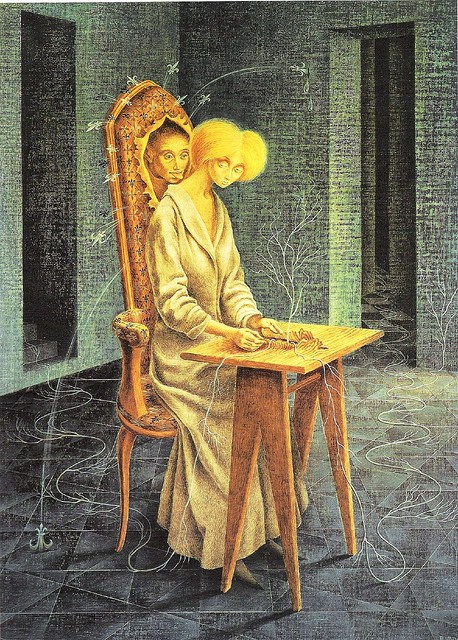
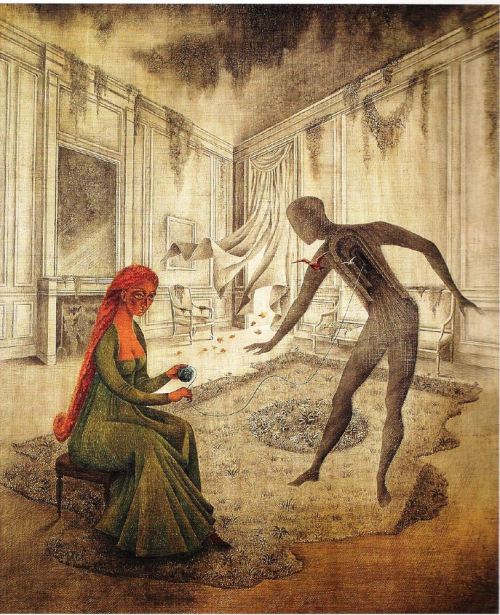
Visual Examples:
Examples that use hatching, cross-hatching, etc to create shading and a sense of depth.
Student examples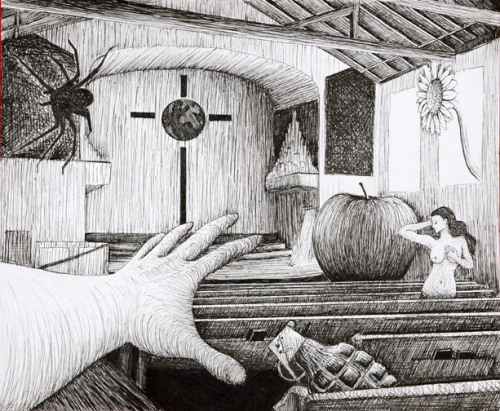
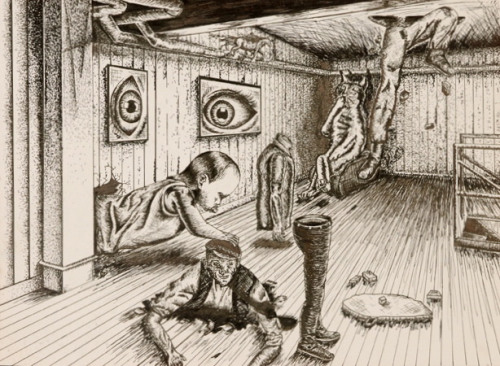

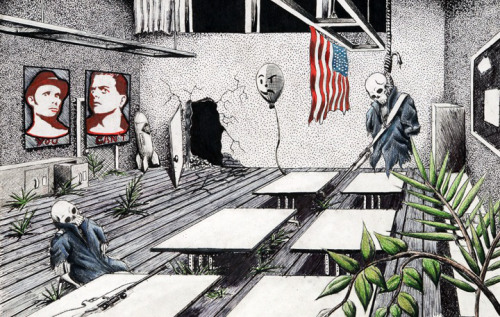

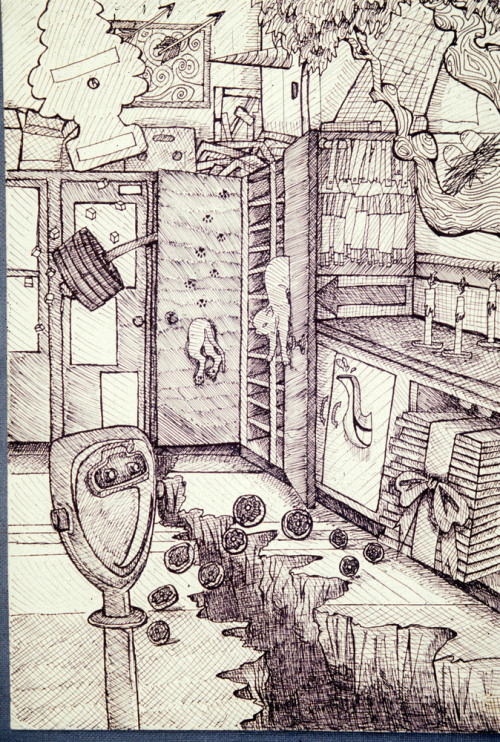



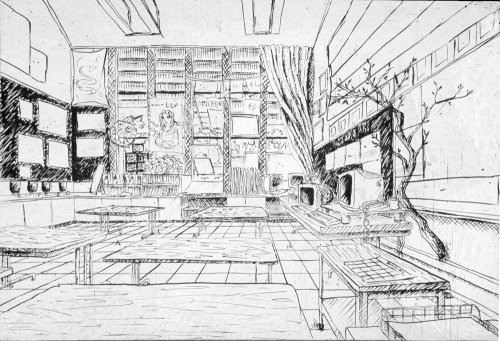
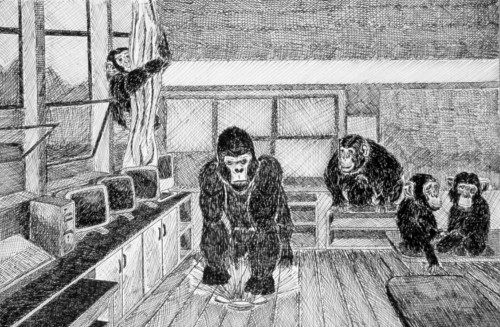
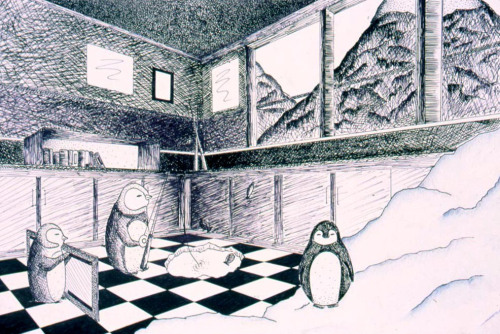
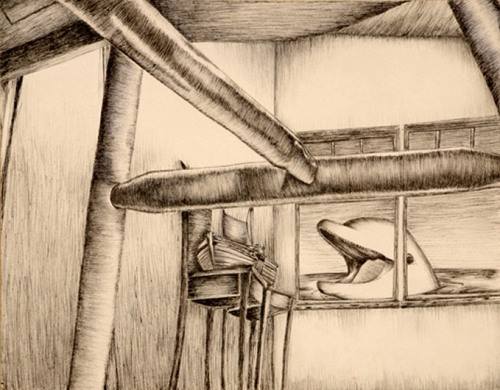
HOW TO DRAW A ROOM IN PERSPECTIVE:
This isn’t easy and it takes a real understanding of how perspective works. First, you’ll need to figure out if your photo is in ONE OR TWO POINT perspective. I can help you with this, but the easiest way is to line up several rulers (or pencils or anything straight) along the horizontal receding lines in the photo, like the edge of the wall & ceiling. If they all line up with one point (which may be waaaaay off the edge of the paper), then it’s one point perspective. Or if they seem to be going in different directions, then it’s probably 2 point. BE SURE YOU KNOW WHICH YOU’RE DEALING WITH before you start your drawing!
Below are some 2-point interior perspective samples- also simple, no surreal stuff… Just basic images that will help show you how to tackle 2-point perspective!
Some of the earliest and finest examples interior spaces using linear perspective. These examples also show you HOW to find the vanishing points in a photograph.
Here you can see how the vanishing points were found on a photo by lining up two or three lines going the same direction. I often do this using two rulers.
If you’re doing 2-point it’s often best if your vanishing points are FAR away from each other, even beyond the edge of the paper. Feel free to put them on the drawing board. Just be sure they’re level by using a yardstick to make a horizon line.

No comments:
Post a Comment